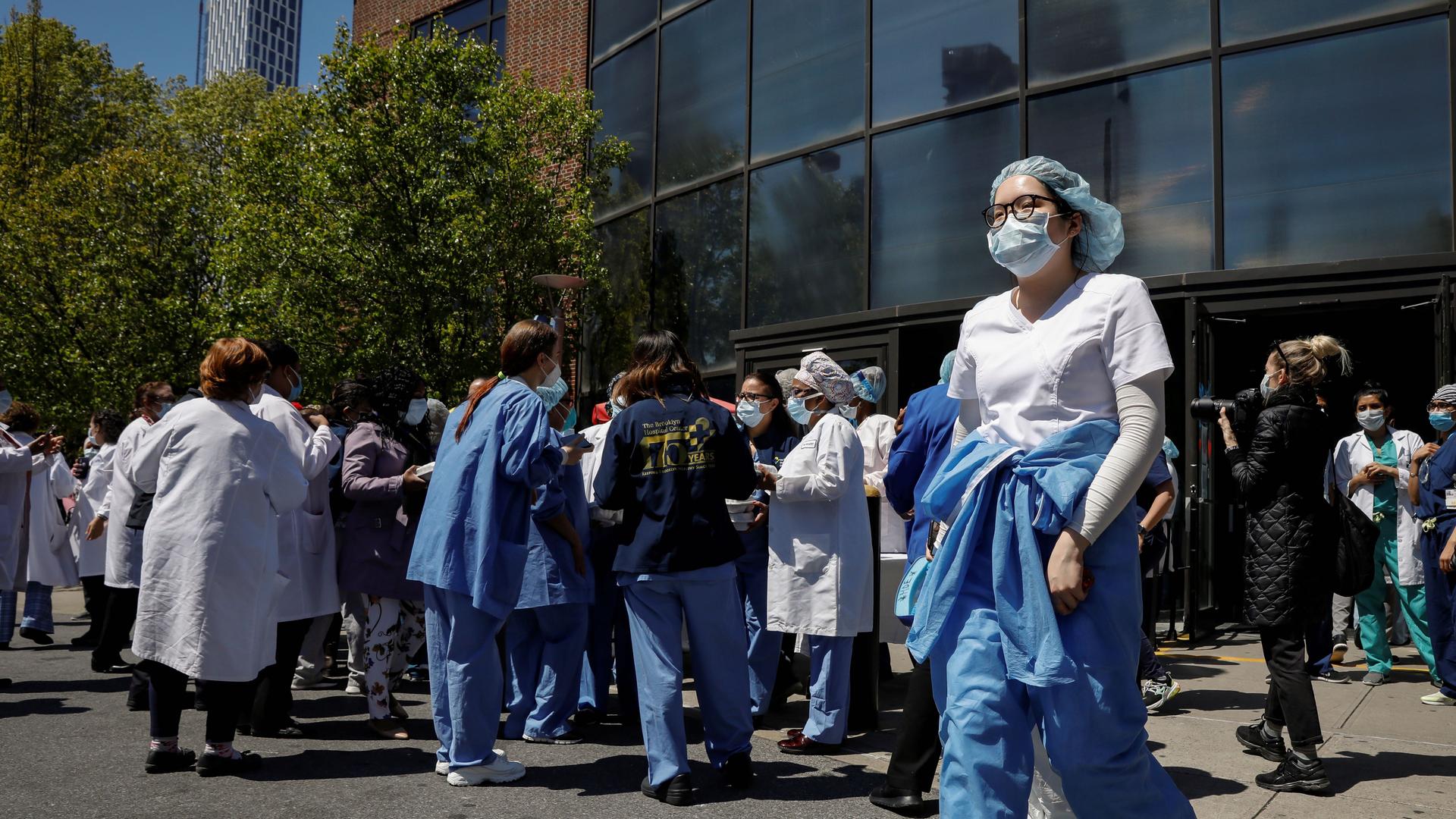When Dr. Vivekanand Tiwari was treating patients with the coronavirus at a hospital in Springfield, Illinois, this past spring, he and his wife took precautions to reduce exposure risks at home, but the situation weighed heavily on his mind.
“Many times we slept separately. I would just lay awake in my bed looking at my family thinking about what will happen… It definitely brings my stress level to nowhere experienced before.”
“Many times we slept separately,” Tiwari said, adding that it was difficult to get quality sleep. “I would just lay awake in my bed looking at my family thinking about what will happen…It definitely brings my stress level to nowhere experienced before.”
Related: A global initiative could ensure equitable access to a COVID-19 vaccine. Can it work?
Tiwari arrived in the US from India in 2011 to complete residency training. Now, he has to keep working to meet the requirements of his temporary, H1-B work visa while he waits for a green card. But there’s no telling how long he could be waiting — the US caps the number of work-based green cards for each country, and slots from India fill up fast.
In the meantime, if he gets sick, and can’t do his job due to long-term disability, or worse yet, if he were to die, his family would fall out of status and have to leave the US. That reality has become more heightened during the coronavirus.
“I’d have to go back to my country and start from scratch,” said Shikha Shah, Tiwari’s wife, who just gave birth to their second child two weeks ago. Their oldest child is 4. “So, of course, that’s the scariest part of the whole situation.”
The pandemic has been especially difficult for health care workers on the front lines, but it’s having a disproportionate toll on immigrant, Black and Latino health workers. And for thousands of immigrant doctors like Tiwari, the situation is especially worrying given the precariousness of their status in the US.
In the United States, around a quarter million doctors are immigrants, representing about 1 in 4 doctors, according to the Migrant Policy Institute. That overall percentage is higher in rural and lower-income areas, where immigrant doctors often fill essential positions in areas with health care shortages.
It’s hard to find an exact number but one advocacy group, Physicians for American Healthcare Access, or Paha, estimates that approximately 12,000 doctors, mainly from India and China, are in limbo, continuing to re-up temporary work visas while sitting on waitlists for green cards.
Related: Public health experts worry about flu and coronavirus overlap
The pandemic has further complicated an already complex US immigration system, said Greg Siskind, a Nashville-based immigration lawyer who specializes in doctors’ visas. Visas have become even harder to access, Siskind said, and travel is even more difficult.
As places such as the United Kingdom, France, and Canada adopt policies to attract immigrant health workers and to support them, he said the United States is looking less and less attractive as a place to practice medicine.
“This is really the first time in my three decades of doing this that I’ve been hearing more than just the odd person here and there saying that they are looking at other countries and are no longer interested in the United States because of the immigration issues,” Siskind said.
Congress is working to address these problems through a couple of proposals introduced earlier this year. Included in the massive Health and Economic Recovery Omnibus Emergency Solutions Act, or Heroes Act, is legislation that would ease the visa process for doctors and nurses and provide more protections for their families.
Related: COVID-19 threatens global progress in fight against other communicable diseases
A different piece of legislation introduced during the pandemic would both ease and speed up the permanent residency process for immigrant doctors, specifically through tapping into unused employment-based visas from other countries and transferring them to these doctors and nurses.
“The unused visas for all these past years, let’s use them toward the health care warriors, the health care heroes.”
“The unused visas for all these past years, let’s use them toward the health care warriors, the health care heroes,” said Dr. Raghuveer Kura, a nephrologist in southeastern Missouri who co-founded Paha in 2017.
Another problem this would address, Kura said, is the inability for doctors to relocate to regions that have the greatest need during a fast-changing pandemic. The common work visas that international doctors have are bound to a specific health care employer.
Related: Scientists grapple with questions around coronavirus immunity
Kura, who after 20 years of working in the US did get his green card in February, said he could use some backup in rural Missouri, where COVID-19 cases are on the rise. He worries about what could happen to his patients who depend on him, day and night, if something were to happen to him.
“We have a ton of immigrant, talented physicians from all over … who can deal with ICU [intensive care unit] patients. Why can’t they work with me here? No, they cannot,” Kura said.
